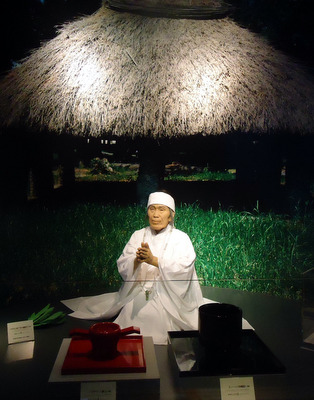- Japanese/Okinawan: ノロ (noro, nuru)
Noro were Ryukyuan village priestesses, who performed a variety of rituals and ceremonies for the people of the area, as well as watching over local utaki. Most magiri had several noro.[1]
Prior to the 16th century, noro had considerable local power. In the 16th century, however, King Shô Shin significantly reduced the noro's power, establishing a new hierarchy of priestesses, more closely controlled by the government, and headed by his sister, the kikoe-ôgimi.[2] Under this new system, noro were appointed and granted land in each magiri; this remained a rather prestigious position, however.[3] They often had their own assistants, called ucchigami (控神) in the case of male assistants, and niigami (根神) in the case of female ones.[1]
Their homes, known as nuru nu dunchi, were typically just the same as other private homes in the village, with the difference of the inclusion of a shrine to the fire spirit (hi nu kan).[1]
References
- ↑ 1.0 1.1 1.2 Plaques at reproduction of a noro's house, Okinawa Furusato Mura, Ocean Expo Park, Nakijin.[1]
- ↑ Kerr, George H. (2000). Okinawa: the History of an Island People. (revised ed.) Boston: Tuttle Publishing, 111.
- ↑ "Oroku ma~i" 小禄ま~い. Pamphlet. Naha City Board of Education Cultural Properties Division 那覇市教育委員会文化財課, 1989.
